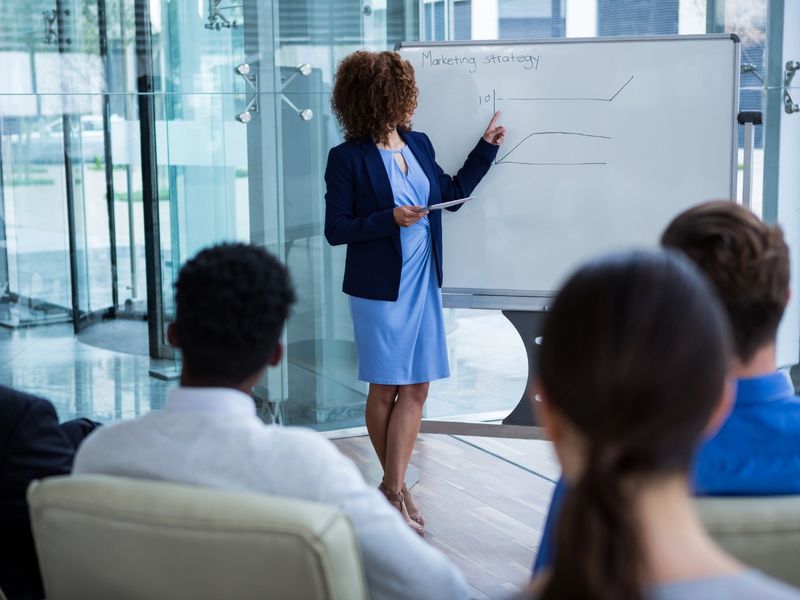Really, if you don’t have a plan, all the resources you allocate to a digital marketing action will surely be useless. Maybe you don’t need a digital action, or maybe you need professional support.
Strategic planning in communication is fundamental. It consists of determining objectives, strategies that will show us the way to do it, a detailed action plan, and a vision of the final results that we expect.
Elements to take into account in the digital strategy for events
THE TARGET GROUP
We don’t want to reach everyone. You know who you want to reach with your communication plan and you’re going to have to give up the rest. This is essential to focus and optimize all the digital resources you have at your disposal.
But surely the most relevant differentiation is between the public that already knows you and the one that doesn’t. The first one may have already visited your website, is following you in your networks or better yet, you have his phone or email address. The action plan for these two types of audience must be 100% differentiated.
THE STRATEGIC OBJECTIVES
What do we intend to achieve from our target audience? Our pretensions may be different depending on each audience and the final objective expected from our event.
- Branding: Be careful with this. If you are online in a minor or major way you are always doing branding, but the decision to concentrate a campaign on advertising or other objectives can radically change your communication plan.
- Getting leads: When we refer to getting new users, in the first instance we try to get their attention so that they get an email or an interaction with our web or social network contents.
- We expect a concrete action: We bet directly on our audience to do something very concrete such as filling out a registration form
Today we no longer argue that online and offline actions are complementary. The communication plan must provide for an overall strategy and establish synergies between the two areas.
The action plan of your strategy should take into account where you are in your communication process, and I wouldn’t dare to say which phase is the most important.
Apparently the critical moment of communication is the BEFORE since you depend totally on being able to capture the participation of your target audience, although it is DURING the event when you can really seduce them, and AFTER when you can make them loyal.
Inbound marketing and content marketing at events
We are saturated with information and instead we are very clear about what we want and we know how to find it on the net. It’s about being picked up and not about us picking up our customers.
Generating interesting content related to our event is a key resource for our communication strategy. On the one hand, it highlights us as experts in our sector, and on the other hand, it provides good positioning in search engines.
The new google algorithm and the users’ navigation culture indicate that the content has to be very natural and oriented to who is going to read it and not saturate it with SEO positioning resources. Indeed, if we manage to gain the trust of users as experts, let’s not spoil it with terminology and resources that may seem like spam.
Likewise, quality content will allow us to create links with other experts in the sector who will be interested in negotiating link exchanges or supporting our own content and beyond. This way we generate a vicious circle by which a great content allows us to increase our prestige and at the same time our positioning in google.

The online communication channels in events
You do not necessarily have to be exhaustive using all the channels available for online communication. The important thing is to have analyzed the potential and characteristics of each channel in relation to our product to influence those that will give us greater projection and better results.
It’s also not a problem to have an open Pinterest channel to which we don’t pay much attention, but it’s important that it has a minimum quality so as not to give a bad image of our project. If not, better to close the channel.
The challenge is to be very good and very active in the channels that do work for us, and to express their potential to the fullest. This involves a great deal of effort and this is also one of the reasons why we are going to have to choose.
THE WEB DESIGN
Or rather, the web structure. We love design and it is the main element we have to transmit our brand values and generate branding, but the web must be basically oriented to the user experience and to facilitate the identification of contents and help channels.
In the events and congress sector there are a large number of wordpress or wix templates that will help us understand what a page structure and navigation should look like.
With the new google algorithm it is essential that the website is prepared for optimal use from a mobile terminal.
THE BLOG
The blog section will be the main channel through which to transmit the contents that make us experts in our field, and will help us to relate to the sector, blogers or influencers of the sector.
It must have a good indexation and a good structure of topics that allows us to add for SEO and that does not generate effects of cannibalism among our own posts.
The categories and tags section will help a lot in this user experience, as well as the posts published recently or those we want to highlight.
The blog will also be useful for us to capture leads from our followers. It is important that from a good start you have a newsletter subscription plugin, ebooks, promotions or content that we can disseminate.
